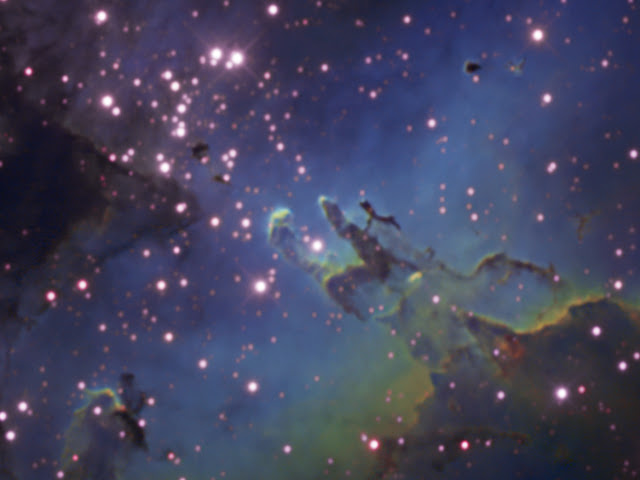Lastnight, setup the gear out in the backyard again to collect rest of SII and OIII data for NGC2070. I had just finished polar aligning when the wind picked up. I really need to hurry up and build that observatory. Well, instead of calling it, I decided to have a play at telescope pointing error modeling.
At the moment I use EQMOD's built-in align and sync feature, which allows me to select any stars in planetarium then manually sync and let the EQMOD build a correction model in the background.
 |
| EQMOD alignment points map & target triangulation |
 |
| Maxpoint GUI |
This works okay provided I have a 'good' polar alignment and most of the time it puts the target in the FOV of my 1600mm setup but never quite centered. Not really an issue for me right now as I only image one target per night and only takes few clicks to center the target anyway. But, if I was to start automating my imaging in the very near future I can see that this is one area that needs improving.
MaxPoint is one of the two softwares that I've heard of written for this job. TPoint being the other and as far as I'm told much better too. Since I already had trial version of Maxpoint installed I fired it up to see what the go 'to' is... :)
The MaxPoint becomes the telescope hub so it can intercept any goto commands from apps such as planetarium to transparently apply pointing corrections. I figured that I need to disable the alignment corrections in the EQMOD for this to be effective, but not quite sure about it yet.
Only requiring minimal setup, I kicked it off with a 25 star calibration routine, wasn't game enough to go for the default 100 stars!? I can see this is really written for permanent observatories with high grade mounts. My poor little EQ6 would probably overheat after 100 continuous slews.
 |
| Sky Map |
 |
| Calibration Observation |
Each slew followed by plate solve started to populate Calibration Observations table with calculated pointing errors. It also put little red 'X's on Sky Map representing the points its visited in the sky. I actually enjoyed sitting back and watching this whole process unfold before me. My polar alignment must have be good as all 25 slews yielded successful plate solves. So, I might actually give the 100 star calibration a go next time at the risk of my mount melting down.
At the end of the scope dancing routine, below window shows a summary of the calculated errors contributing to my pointing accuracy.
I can see that it has worked out my polar alignment accuracy as well and I might try its built-in Polar Align feature next time. I haven't gone into working out what the other figures exactly mean yet but test slews to targets in different parts of the sky definitely showed improvement over the EQMOD's modeling, but still it didn't put the targets dead center. May be it needs a 100 star calibration or it may be that I'm expecting too much from my poor little EQ6. Well, for now, plate solving and re-slew technique works well for my portable setup and may look at MaxPoint or TPoint again later on for a permanent setup, perhaps with an upgraded mount.























